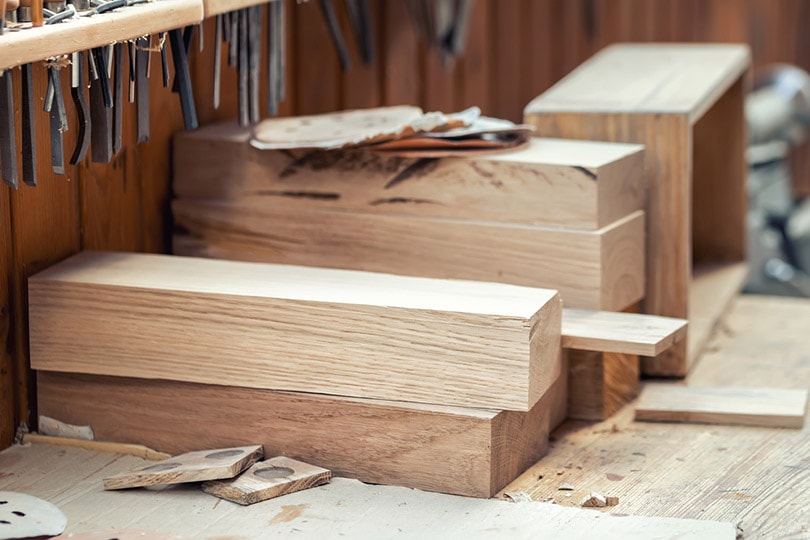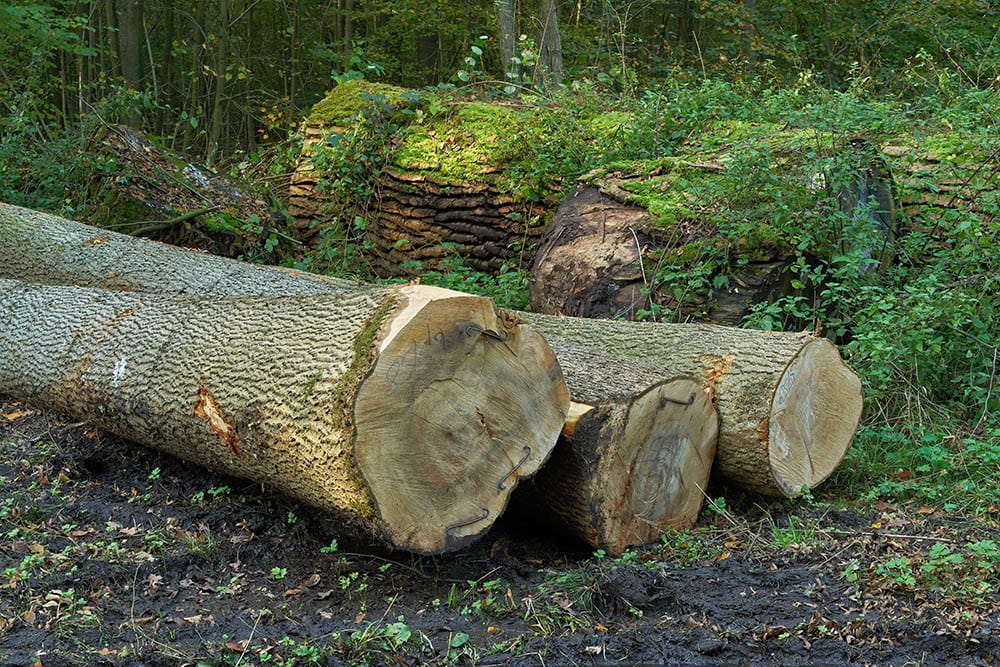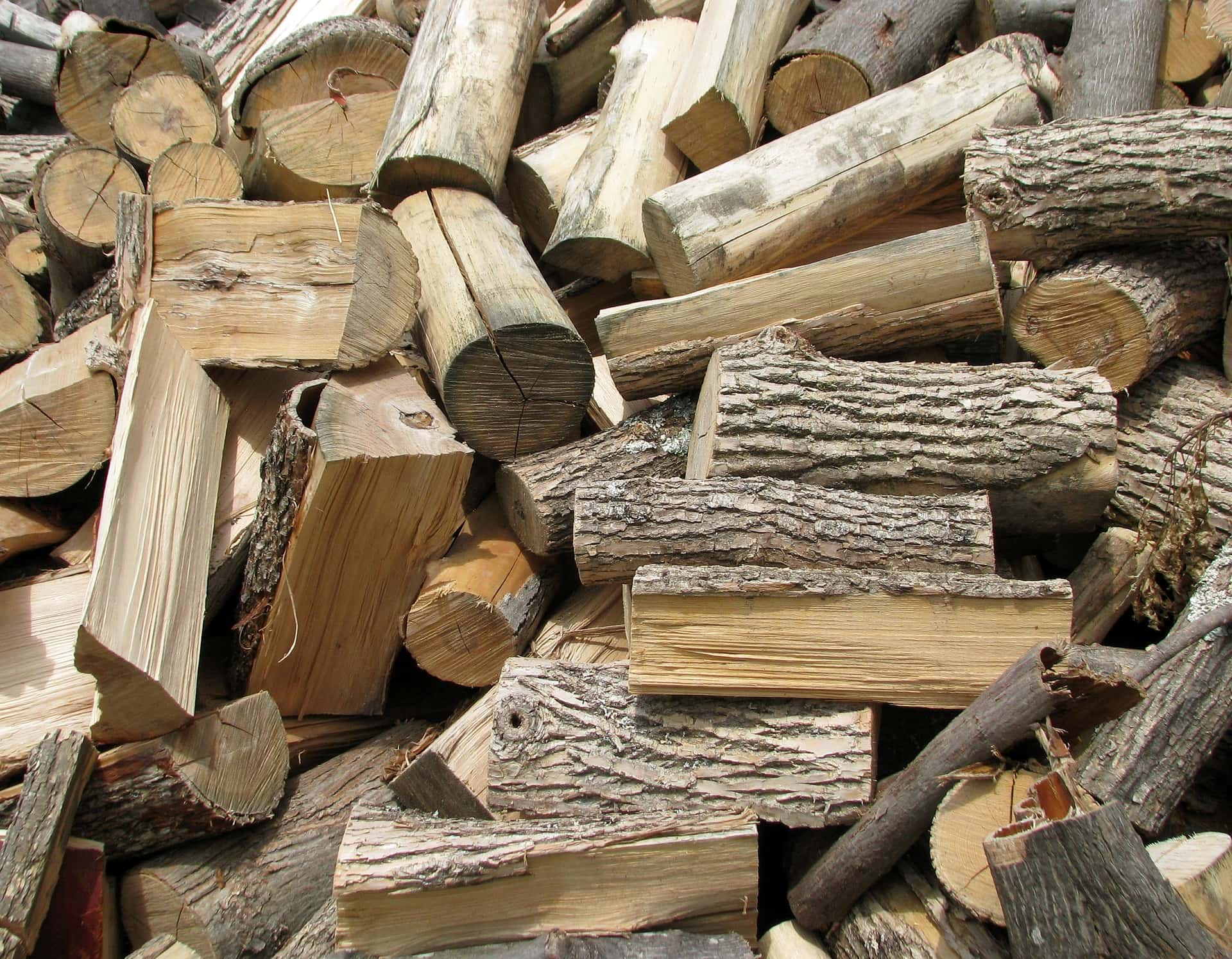What is the Best Wood for Bending? (With Pictures)
-
Shea Cummings
- Last updated:

Wood bending can be a tedious process, and not every woodworker will find joy in it. However, some incredible projects and designs can be created with wood bending. The reality is that almost all wood can be bent with one process or another. As a general rule, you will want to find a hardwood with a straight grain and moderate density. The process you are bending with will determine the ideal hardwood.
Below we will list three commonly used hardwoods in wood bending. Then we will go over a couple of common questions surrounding this unique and old practice.
 The 3 Best Woods for Bending
The 3 Best Woods for Bending
Oak

There are a variety of different species of oak trees, but overall it is a readily accessible hardwood. Red oak comes in as one of the most commonly used types of wood for all wood bending. Not only is it very easy to get, but it is also reasonably priced. Because it is often mass-processed, it usually takes a lot of abuse when being kiln-dried. Make sure you inspect your piece carefully to ensure there are no defects.
A close follower in popularity for oak wood is white oak. While not quite as common as the red variety, it is still relatively easy to get. One common complaint is cracking, which is more than likely an issue with drying. This highlights the importance of proper drying for any pieces being used for wood bending.
Ash

White ash is a wonderful wood to use when steam bending due to how nicely it bends. When bent, white ash maintains its strength. As such, it is commonly used in applications that will get a little bit of abuse, such as hockey sticks or snowshoes.
Like any other wood, you want to make sure you select pieces that have as few imperfections as possible such as knots or cracks. If you use kiln-dried pieces, give extra attention to this inspection process. Select quality pieces, so you aren’t dealing with breakage in the middle of a big project.
Hickory

While hickory is commonly used in wood bending, it can be a great experience or a terrible one. This is due to there being several subspecies of hickory that vary wildly in their bendability. Some are great to work with and yield nicely when steamed, whereas others are incredibly stubborn. These others can sometimes take more force than your jig or bending process is ready for.
Different Types of Wood Bending
There are several methods to accomplish wood bending. Some ways are reserved for an advanced DIYer or professional, while others are easy to learn and do safely. These are the most common three methods of wood bending:
- Water: Out of all the ways to bend wood, using water is the most beginner-friendly method. With water, the pieces of wood cannot be overly thick, though. The wood fibers need to be able to soften with soaking.
- Steam: Like water, steam is also very common, but it requires a little more know-how and a more advanced setup. Board thickness is not as critical with steam because hot steam seems to penetrate the wood more easily.
- Kerf-Cutting: Unlike the other two methods mentioned, kerf-cutting doesn’t require water or steam. All you need is an adjustable circular saw and wood glue. The downside to kerf-cutting is you are a little bit more limited to the type of bending you can do. But for many applications, it’s an excellent option.
Inspecting and Preparing Wood for Bending
There are two main things to look for when selecting wood pieces for bending. The first is paying attention to the tannins in the wood. If you are dealing with a high-tannin wood, it will likely discolor at the point where it bends. This may not be a big deal, but it could be a deciding factor in your wood choice, depending on the desired result.
The other important thing to consider is the moisture content in the wood. Ideally, you want the wood you are working with to have a moisture content of around 20%–30%. The only way to accurately get this information is with a wood moisture meter. These tools can be purchased at most building centers or many places online.
Conclusion
If you decide to try your hand at wood bending, you will quickly realize that it is an art. It’s entirely possible that your first few attempts will not work as you intend them to. But if you stick with it and learn the craft, you will be on your way to creating some stunning woodworking creations.
Many how-to videos are available online that will give you step-by-step instructions on various methods. When learning these new techniques, pay special attention to the safety recommendations that are made as wood bending can involve some more dangerous aspects as far as tools and chemicals go.
Featured Image Credit: piramit sorat, Shutterstock
Contents
 The 3 Best Woods for Bending
The 3 Best Woods for Bending
